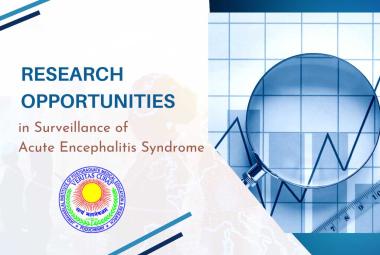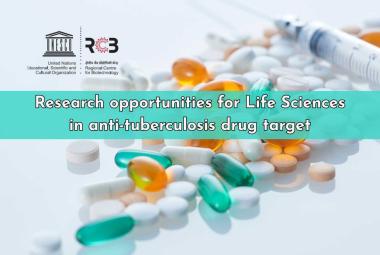 About Authors:
About Authors:
Mithun NM*, Dr.Shashidhara S1
Dept. of Pharmacognosy,
Government college of pharmacy,
Bangalore
Abstract: Eclipta alba (L.) is small branched annual herbaceous plant with a long history of traditional medicines uses in many countries especially in tropical and subtropical regions. The herb has been known for its curative properties and has been utilized as antimytotoxic, analgesic, antibacterial, antihepatotoxic, antihaemorrhagic, antihyperglycemic, antioxidant, immunomodulatory properties and it is considered as a good rejuvenator too. Recent studies showed an antivenom property & corrosion pickling inhibitor action on mild steel in hydrochloric acid. A wide range of chemical compounds including coumestans, alkaloids, thiopenes, flavonoids, polyacetylenes, triterpenes and their glycosides have been isolated from this species. Extracts and metabolites from this plant have been known to possess pharmacological properties. This contribution provides an comprehensive review on ethnomedicinal uses, chemical composition, and the pharmacological profile as medicinal plant. Particular attention is given to antihepatotoxic, analgesic, antioxidant , antihyperglycemic, antiaggresive, wound healing properties and insecticidal effects presented in this review such that the potential use of this plant either in pharmaceutics or as an agricultural resource can be evaluated.
Reference ID: PHARMATUTOR-ART-1002
INTRODUCTION:
Eclipta alba (L.) is an annual herbaceous plant, commonly known as false daisy. It is an erect or prostrate, much branched, roughly hairy, annual, rooting at the nodes; the leaves are opposite, sessile and lanceolate. Belonging to family Asteraceae. it is also known as Bhringaraj and Karisilakanni, which is found a common weed throughout India ascending up to 6000 ft. The genus name comes from the Greek word meaning "Deficient," with reference to the absence of the bristles and awns on the fruits. The specific Eclipta alba means white which refers to the color of the flowers. Main active principles consist of coumestans like wedelolactone, desmethylwedelolactone43, furanocoumarins, oleanane & taraxastane glycosides45.
Eclipta alba (L.) has been used in various parts of tropical and sub-tropical regions like south America, Asia, Africa. There are three kinds or Eclipta alba-the white-flowering, the yellow-flowering, and the black-fruiting, but all three grow throughout India by marshes, rivers, and lakes or on the foothills of the Himalayas. It is an active ingredient of many herbal formulations prescribed for liver ailments and shows effect on liver cell generation .It is used as a tonic and diuretic in hepatic and spleen enlargement. It is also used in catarrhal jaundice and for skin diseases1. The alcoholic extract of the plant has shown antiviral activity against Ranikhet disease virus41. The plant is commonly used in hair oil all over India for healthy black and long hair34. The fresh juice of leaves is used for increasing appetite, improving digestion40 and as a mild bowel regulator. It is commonly used in viral hepatitis to promote bile flow and protect the parenchyma and
popularly used to enhance memory and learning . The plant has a reputation as an antiageing agent in Ayurveda42. It is used as a general tonic for debility. Externally it is used for inflammation10' 11, minor cuts and burns and the fresh leaf-juice is considered very effective in stopping bleeding25. Leaf juice mixed with honey is also used for children with upper respiratory infections and also used in eye and ear infections. It is a source of coumestans-type compounds used in phytopharmaceutical formulations of medicines prescribed for treatment of cirrhosis of the liver and infectious hepatitis43. It is widely used in India as a chologuague and deobstruent in hepatic enlargement, for jaundice and other ailments of the liver and gall bladder1. The water extract of Eclipta prostrata (whole plant) exhibited the most potent inhibitory activity against HIV-1 integrase (HIV-1 IN)47. Vedic Guard, a polyherbal formulation is a synergistic combination of 16 medicinal plant extracts contains Eclipta alba as a major ingredient46. Charaka advises taking the juice of eclipta alba with honey to prevent the onset of senility, and its oil as the best medicated massage oils for rejuvenation therapies.
PHYTOCHEMISTRY:
Eclipta alba (L.) contains wide range of active principles which includes coumestans, alkaloids, flavonoids, glycosides, polyacetylenes, triterpenoids. The leaves contain stigmasterol, a-terthienylmethanol, wedelolactone, demethylwedelolactone and demethylwedelolactone-7-glucoside43. The roots give hentriacontanol and heptacosanol44. The roots contain polyacetylene substituted thiophenes.The aerial part is reported to contain a phytosterol, P-amyrin in the n-hexane extract and luteolin-7-glucoside, P-glucoside of phytosterol, a glucoside of a triterpenic acid and wedelolactone in polar solvent extract44. The polypeptides isolated from the plant yield cystine, glutamic acid, phenyl alanine, tyrosine and methionine on hydrolysis. Nicotine and nicotinic acid are reported to occur in this plant44.
Table No. 1
Parts containing chemical constituents:
|
Sl.No. |
Parts |
Chemical constituents |
|
1 |
Leaves |
Wedelolactone[1.6%], Desmethylwedelolactone,Desmethyl-wedelolactone-7-glucoside, stigmasterol |
|
2 |
Roots |
Hentriacontanol, Heptacosanol& Stigmasterol, Ecliptal, Eclalbatin. |
|
3 |
Aerial parts |
P-amyrin & Luteolin-7-O-glucoside, Apigenin, Cinnaroside, Sulphur compounds, Eclalbasaponins I-VI |
|
4 |
Stems |
Wedelolactone |
|
5 |
Seeds |
Sterols, Ecliptalbine (alkaloid) |
|
6 |
Whole plant |
Resin, Ecliptine, Reducing sugar, Nicotine, Stigmasterol, Triterpene saponin, Eclalbatin,Ursolic acid, Oleanolic acid |
Coumestan:
Coumestan is an organic compound that is a derivative of coumarin. Coumestan forms the central core of a variety of natural compounds known collectively as coumestans. Coumestans, including a coumestrol and phytoestrogen are found in a variety of plants. Because of the estrogenic activity of some coumestans, a variety of syntheses have been developed that allow the preparation of coumestans so that their pharmacological effects can be explored. The major coumestan isolated from Eclipta alba includes wedelolactone 0.5-0.55% and desmethylwedelolactone14.
Terpenoids and their glycosides:
Taraxastane triterpene glycosides, named eclalbasaponins VII-X were isolated, along with four oleanane glycosides eclalbasaponins I-VI. The structures of eclalbasaponins VII-X were characterized as 3β, 20β,16β and 3β, 20β, 28β trihydroxytaraxastane glycosides, and their sulphated saponins15. Two oleanane-type glycosides eclalbasaponin I and eclalbasaponin II along with the ubiquitous steroid, stigmasterol were isolated from an n-hexane extract of the stem bark of Eclipta prostrata. From the whole part of Eclipta alba Hassk., six new triterpene glycosides, named eclalbosaponins I-VI, were isolated these structures were characterized as echinocystic acid glycosides and those of V -VI were revealed to be sulphated saponins17.
Alkaloids:
Contemporary clinical tests showed that the herb contains the alkaloid ecliptine. Bioassay-guided fractionation of the MeOH extract of Eclipta alba using three yeast strains (1138, 1140, and 1353) resulted in the isolation of eight bioactive steroidal alkaloids (1-8), six of which are reported for the first time from nature. The major alkaloid was identified as (20S)(25S)-22,26-imino-cholesta-5,22(A)-dien-3P-ol (verazine, 3), while the new alkaloids were identified as 20-epi-3-dehydroxy-3-oxo-5,6-dihydro-4,5-dehydroverazine (1), ecliptalbine [(20R)-20-pyridyl-cholesta-5-ene-3P,23-diol] (4), (20R)-4P-hydroxyverazine (5), 4P-hydroxyverazine (6), (20R)-25P-hydroxyverazine (7), and 25β-hydroxyverazine (8). Ecliptalbine (4), in which the 22,26-imino ring of verazine was replaced by a 3-hydroxypyridine moiety, had comparable bioactivity to verazine18.
Volatile oils:
The volatile components were isolated from the aerial parts of this plant by hydrodistillation and analysed by GC-MS. A total of 55 compounds, which were the major part (91.7%) of the volatiles, were identified by matching mass spectra with a mass spectrum library (NIST 05.L). The main components were as follows: heptadecane (14.78%), 6,10,14-trimethyl-2-pentadecanone (12.80%), w-hexadecanoic acid (8.98%), pentadecane (8.68%), eudesma-4(14),11-diene (5.86%), phytol (3.77%), octadec-9-enoic acid (3.35%), 1,2-benzenedicarboxylic acid diisooctyl ester (2.74%), (Z,Z)-9,12-octadecadienoic acid (2.36%), (Z)-7,11-dimethyl-3- methylene-1,6,10-dodecatriene (2.08%) and (Z,Z,Z)-1,5,9,9-tetramethyl-1,4,7-cycloundecatriene (2.07%)19.
Saponins:
From the whole plant of Eclipta alba, a new triterpene saponin, named eclalbatin, together with alpha-amyrin, ursolic acid and oleanolic acid were isolated. The structure of eclalbatin has been established as 3-O-beta-D-glucopyranosyl-3-beta-hydroxy-olean-12-en-28-oic acid, 28-O-beta-D-arabinopyranoside (1) on the basis of chemical and spectral data20. Dasyscyphin C was isolated from Eclipta prostrate which were studied on the HeLa cells for the anticancer activity12.
BIOACTIVITY:
Eclipta alba is a plant used in folk & traditional medicine for cirrohosis and infectious diseases1. It is believed to prevent aging and rejuvenate hair, teeth, bone, memory, sight, hearing. The plant was known to possess significant antifungal and insecticidal properties. The biological properties of the plant are treated under two subheadings: (i) pharmacological properties (ii) insecticidal properties and other biological properties.
PHARMACOLOGICAL PROPERTIES:
Crude extract:
The crude extract has been found to have wound healing properties. It been reported to counteract CCl4-induced inhibition of the hepatic microsomal drug metabolizing enzymes. The loss of hepatic lysosomal acid phosphatase and alkaline phosphatase by CCl4 was significantly restored by Eclipta alba. The study shows that hepatoprotective activity of Eclipta alba is by regulating the levels of hepatic microsomal drug metabolizing enzymes21. The fresh plant is used as self medication by AIDS patients in southern Thailand and showed potential as a therapeutic agent against Giardia intestinalis infections22,23. The leaf extract showed hypolipedemic activity in atherogenic diet induced hyperlipedemic rats7. It has antimicrobial and antioxidant properties24. 3% extract of Eclipta alba is used in pilex formulation with other ingredients. It has been reported to decrease bleeding time25. Leaf extract has been used in edema. It is used in the treatment of paronychia26.
Antihepatotoxic properties:
The hepatoprotective effect of the ethanol/water (1:1) extract of Eclipta alba has been studied at subcellular levels in rats against CCl4-induced hepatotoxicity. Eclipta alba significantly counteracted CCl4-induced inhibition of the hepatic microsomal drug metabolizing enzymes. The loss of hepatic lysosomal acid phosphatase and alkaline phosphatase by CCl4 was significantly restored by Eclipta alba. The study shows that hepatoprotective activity of Eclipta alba is by regulating the levels of hepatic microsomal drug metabolizing enzymes21. Bi-herbal ethanolic extract (BHEE) from the leaves of Eclipta alba and seeds of Piper longum at a dose level of 50 mg/kg body weight was administered orally once for 14 days which restored elevated serum marker enzymes such as SGOT, SGPT, ALP, LDH, ACP, GGT and 5' Nucleotidase, due to CCl4 treatment. All the biochemical parameters like total protein, total bilirubin, total cholesterol, triglycerides, and urea were also restored towards normal levels5. Hepatoprotective activity of methanolic extract and sub fractions of leaves and the chloroform extract and sub fractions of roots of Eclipta alba was carried out using carbon tetrachloride- induced liver damage and Lysosomal enzymes level in wistar albino rats. The methanolic extract of leaves and the chloroform extract of roots of Eclipta alba showed significant activities and respectively causing 72.8% & 47.96% reduction of lysosomal enzyme. The triterpenoid eclabasaponin fraction from methanolic extract of leaves produced significant (78.78%) and the alkaloidal fraction (60.65%) reduction of carbon tetra chloride induced increase in lysosomal enzyme in blood. Coumestan fraction and triterpenoidal saponin fraction from the chloroform extract of roots produced very significant (75.6%) and (52.41%) respectively reduction of carbon tetra chloride induced increase in lysosomal enzyme levels in blood6.
Antihyperlipedemic properties:
It has been reported that in the atherogenic diet induced hyperlipedemic model, the aqueous leaf extract of the Eclipta.prostrata was given orally to the rats which significantly reduced total cholesterol, triglycerides, total protein. There was a significant elevation in the high density lipoprotein cholesterol levels. 200mg/kg of extract showed better results compared to 100mg/kg7. Animal model containing Charles River Sprague-Dawley CD rats (specific pathogen-free/viral antibody-free Crj/Bgi male, 180 ± 10 g) were fed experimental diets supplemented with 0 mg (control), 25 mg (E25), 50 mg (E50), or 100 mg (E100) of a freeze-dried butanol fraction of E. prostrata per kilogram of diet for 6 weeks which reported significant reduction of serum triacylglycerol and total cholesterol, low-density lipoprotein-cholesterol levels and elevation in the high-density lipoprotein in the E50 and E100 groups respectively when compared with the untreated control group8.
Antioxidant properties:
The antioxidant effects of Eclipta prostrata was reported when 50mg/kg and 100mg/kg dose were fed orally into Charles River Sprague-Dawley CD rats which reduced serum hydroxyl radical (nmol/mg protein per minute) and serum lipid peroxide (nmol/mg protein) levels compared to untreated group. 100mg/kg dose significantly reduced Carbonyl content of oxidatively modified proteins8. Antioxidant activity of Eclipta prostrata was determined by FRAP, radical scavenging activity, reducing activity, and DPPH assay. The antioxidant capacity was increased by increasing the concentration of the extracts from 25 to 100mg/ml27. The antioxidant activity of the hexane, ethyl acetate, ethanol and water extracts of E. prostrata were determined by ferric thiocynate (FTC). FTC method was used to determine the amount of peroxide formed and that react with ferrous chloride (FeCl2) to form a reddish ferric chloride (FeCl3) pigment. In this method, the concentration of peroxide decreases as the antioxidant activity increases. Hexane, ethyl acetate, ethanol and water extract at various concentration (50, 100, 250 and 500 in µg/mL), showed antioxidant activities in a concentration dependent manner. Ethanolic extract at the concentration of 500 µg/mL showed (77.62%), which is close to the reference compound α-tocopherol (80.06%)24.
Immunomodulatory activities:
It has been reported that protection of neuronal tissues may be possibly due to the immunomodulatory action of Eclipta alba. Therefore, Eclipta alba can serve as a potential memory modulator28. Experimentation made to assess the immunomodulatory activity of methanol extracts of whole plant of E. alba (1.6% wedelolactone) at five dose levels (dose-response relationship) ranging from 100 to 500 mg/kg using carbon clearance, antibody titer and cyclophosphamide immunosuppression parameters significantly increased phagocytic index and antibody titer and the F ratios of the phagocytic index and WBC count were also significant30. The aqueous leaf extract Eclipta alba was fed into a fish (tilapia, Oreochromis mossambicus) at 0, 0.01, 0.1 or 1% levels as a diet for 3 weeks. After each week, non-specific humoral (lysozyme, antiprotease and complement) and cellular (myeloperoxidase content, production of reactive oxygen and nitrogen species) responses and disease resistance against Aeromonas hydrophila were noted which resulted in increased activity of non-specific immune parameters. The results indicate that dietary intake of E. alba aqueous leaf extract enhances the non-specific immune responses and disease resistance of O. mossambicus against A. hydrophila29.
Analgesic and Anti-inflammatory activity:
Albino wistar rats was used to investigate anti-inflammatory activity in which methanolic extract was administered orally. 100 and 200 mg/kg showed significant anti-inflammatory activity in carrageenin and egg white induced hind paw edema in rats which was compared with indomethacin (10 mg/kg) and cyproheptadine (8 mg/kg)31. Analgesic effect was studied on albino mice using ethanolic and alkaloidal extract of Eclipta alba. Standard experimental models such as the tail clip method, the tail flick method and the acetic acid induced writhing response were used which showed both the ethanol extract as well as the total alkaloids produced good analgesic activity in all the different models of analgesia used. The total alkaloidal fraction was the most efficacious in all models tested10,11.
Antidiabetic activity:
Leaf suspension of Eclipta alba (2 & 4g/kg) orally in alloxan induced diabetic rats resulted in reduction in blood glucose level, glycosylated hemoglobin. There was decreased activity of glucose-6 phosphatase and fructose1,6-bisphosphatase, and an increase in the activity of liver hexokinase. Thus oral administration of Eclipta alba suspension possess potent antihypergylcemic activity32. Eclipta alba as an ingredient in polyherbal formulation Pan-five were scientifically and clinically proved to possess Antidiabetic and diuretic activity by acting upon pancreas by restoration and regeneration of pancreatic β-cell activity33.
Hair growth & Alopecia:
Eclipta alba is used in hair oil preparations since it promotes hair growth and maintains hair black. 10%w/v of Eclipta alba was an main ingredient in the preparation of herbal formulation for hair growth35. Alopecia is a dermatological disorder with psychosocial implications on patients with hair loss. Eclipta alba is a well-known Ayurvedic herb for hair growth. In the reported work Petroleum ether & ethanolic extracts were incorporated into oleaginous cream (water in oil cream base) and applied topically on shaved denuded skin of albino rats. The time (in days) required for hair growth initiation as well as completion of hair growth cycle was recorded. Minoxidil 2% solution was applied topically and served as positive control for comparison. The result of treatment with 2 and 5% petroleum ether extracts were better than the positive control minoxidil 2% treatment .34
Anticancer activity:
Methanolic extract of Eclipta alba was evaluated for its anticancer activity against Ehrlich Ascites Carcinoma (EAC) in Swiss albino mice. On day 1, the extract of Eclipta alba at a dose of 250 and 500 mg/kg body weight were administered orally and continued for 9 consecutive days. The anticancer activity was examined by determining the tumor volume, tumor cell count, viable tumor cell count, nonviable tumor cell count, mean survival time and increase in life span in experimental animal models. The extract increased the life span of EAC treated mice and restored the hematological parameters as compared with the EAC bearing mice. Thus, study revealed that the methanolic extract of Eclipta alba showed anticancer activity in the tested animal models13. Coumestans are also known to act as phytoestrogens. These compounds are present in soyabeans and clover. In many countries it is used as diet which act as chemopreventive agent in breast and prostate cancer14.
Dasyscyphin-C (saponins) a newer isolated compound from Eclipta prostrata reported to have anticancer-cytotoxic activity12. It was tested under invitro conditions in HeLa (Human cervical carcinoma) & vero cell lines. At the concentration of 50^g/ml it showed a good anticancer-cytotoxic activity on HeLa cells12. A rat hepatic stellate cell line (HSCs) was used as in-vitro assay system, the methanolic extract of aerial parts of Eclipta prostrata showed significant inhibitory activity on HSCs proliferation9.
Combination therapy:
Eclipta alba (whole plant), Mimosa pudica (whole plant), Vitex negundo (whole plant), and Solanum nigrum (aerial parts) possessed styptic and anti-inflammatory properties and help in regeneration of the vascular endothelium36. Combination of Herbs like Anethum sowa (Shatapushpa), Piper longum (Pippali mool), Valeriana wallichii (Tagar), Cassia fistula (Aragvadh), Withania somnifera (Ashwagandha) and Triphala (A herbal combination of three fruits) with Eclipta alba (Bhringaraj) pacify the aggravated Vata dosha and combination with Elaeocarpus ganitrus (Rudraksha), Herpestris monniera (Brahmi) showed a tranquilizer effect37. Herbal mixture containing Phyllanthus nigrum Picrorrhiza kurroa, Zingiber officinale,Boerhaavia diffusa, Andrographis paniculata, Cichorium intybus, Emblica officinalis, Embelia ribes, Terminalia chebula, Terminalia arjuna, Piper longum with Eclipta alba is used as a good digestive tonic38. Galactin Vet Bolus a polyherbal ingredient containing Eclipta alba increased the yield of milk in the Holstein and jersey crossbred cows2. Eclipta alba with Acacia catechu leaves reduced severe hepatotoxicity3.
Other pharmacological activities:
It has been reported that the importance of free carboxylic acid at C-28 position in echinocystic acid derivatives from the methanolic extract Eclipta prostrata showed antifibrotic activity9. Ethanolic and ethyl acetate fractions of Eclipta prostrata were tested for its antibacterial activities against Escherichia coli, Klebsiella pneumoniae, Shigella dysenteriae, Salmonella typhi, Pseudomonas aeruginosa, Bacillus subtilis, and Staphylococcus aureus24. Eclipta prostrata is combined with a non-plant material which is used to bath children suffering from malnutrition for 9 days and used as self medication by AIDS patients in southern Thailand22'40. 16 parts of Eclipta prostrata (bhringaraj), 1 part of Triphala formula {Emblica officinalis (amalaki), Terminalia chebula, (haritaki), Terminalia belerica (bibhitaki)}, 1 part of Caltropis gigantean (arka) and 1 part of Smilax officinalis (sariva) mixed with 80 parts of sesame oil and boiled to make a medicated oil which is reported to be used in skin diseases39.
Table.no:2
Pharmacological activities of the chemical constituents:
|
Sl.No |
Chemical constituents |
Pharmacological activites |
|
1 |
Wedelolactone |
Antihepatotoxic48, Antibacterial24, Trypsin Inhibitor, Antivenom50 |
|
2 |
Eclalbosaponins |
hair revitalizing35, Antiproleferative12,14, Antigiardial22 |
|
3 |
Demethylwedelolactone |
Antihepatotoxic43, Antihaemorrhage25, Antivenom50, Dye (cosmetic)51 |
|
4 |
Dasyscyphin C |
Antiviral,Anticancer12 |
|
5 |
Eclalbatin |
Antioxidant47 |
|
6 |
Ecliptalbine, verazine |
Lipid lowering, Analgesic18 |
CONCLUDING REMARKS:
Eclipta alba offers a remarkable activities for curing of many diseases. It has a wide range of chemical constituents. Clinical investigations have been done on pharmacological activities like hepatotoxicity, proliferative, diabetic, hypolipedemic etc. It has an greater potential to inhibit the growth of the bacteria and fungus. Further investigation of the plant can increase the isolation of the newer molecules which will be helpful for the study of the pharmacological activities and to discover from the plant thus preventing the human and the economic losses in the environment.
BIBLIOGRAPHY:
1. Scott Treadway. An ayurvedic herbal approach to a Healthy Liver. Clinical nutrition insights. 1998; 6(16): 01-03.
2. Baig MI, Bhagwat VG. Study the efficacy of Galactin Vet Bolus on milk yield in dairy cows. Veterinary world. 2009; 2 (4):140-42.
3. Rolf teschke, Ruediger bahre. Severe hepatotoxicity by Indian herbal products: A structured causality assessment. 2009; 8(3): 258-66.
4. Sagar B.P, Sangwan A, Panwar A, Sangwan A. In-vitro Production of Anti-hepatotoxic Compounds in Cultures of Eclipta alba Linn. and Silybum marianum gaertn. 2006; 6: 88.
5. Samudram P, Rajeshwari Hari, Vasuki R, Geetha, Sathiya moorthi P. Hepatoprotective activity of Bi-herbal ethanolic extract on CCl4 induced hepatic damage in rats. AJBR. 2008; 2(2): 61-65.
6. Lal V.K, Amit Kumar, Prashant Kumar, Kuldeep Singh Yadav. Screening of Leaves and Roots of Eclipta alba for Hepatoprotective Activity. Arch. Appl. Sci. Res.2010; 2(1): 86-94.
7. Dhandapani R. Hypolipidemic activity of Eclipta prostrata (L.) L. leaf extract in atherogenic diet induced hyperlipidemic rats. 2007; 45: 617-19.
8. Dae-Ik Kima, Sung-Hyen Lee, Jin-Ho Choia, Hyun Soon Lillehoj, Mi-Hee Yu, Gun-Soon Lee. The butanol fraction of Eclipta prostrata (Linn) effectively reduces serum lipid levels and improves antioxidant activities in CD rats. Nutrition Research. 2008; 28: 550-54.
9. Mi Kyeong Lee, Na Ry Ha, Hyekyung Yang, Sang Hyun Sung,Gun Hee Kim, Young Choong Kim. Antiproliferative activity of triterpenoids from Eclipta prostrata on hepatic stellate cells. 2008; 15(9): 775-80.
10. Amritpal singh, Samir malhothra, Ravi subban. Anti-inflammatory and analgesic agents from Indian medicinal plants. International journal of integrative biology.2008; 3(1):58-72.
11. Mahesh Sawant, Jolly C. Isaac, Shridhar Narayanan. Analgesic studies on total alkaloids and alcohol extracts of Eclipta alba (Linn.) Hassk. Phytotherapy research. 2004; 18(2): 111-13.
12. Khanna, kannabiran. Anticancer-cytotoxic activity of saponins isolated from the leaves of Gymnema sylvestre and Eclipta alba on HeLa cells. International journal of green pharmacy. 2008; 1: 227-29.
13. Malaya Gupta, Upal K.anti Mazumdera, Palla K. Haldar, Chandi C. Kandar, Laxmanan Manikanda, G. P. Senthil. Anticancer Activity of Indigofera aspalathoides and Wedelia calendulaceae in Swiss Albino Mice. Iranian journal of pharmaceutical research. 2005; 6(2): 141-45.
14. Neerja Kaushik-Basu, Alain Bopda waffo, Tanaji Talele T, Amartya Basu, Paulo Costa R R, Alcides da Silva J. M, Stefan Sarafianos G, Francois Noel. Identification and characterization of coumestans as novel HCV NS5B polymerase inhibitors. 2008; 36(5): 1482-96.
15. Shoji yahara, Ning ding, Toshihiro nohara, Kazuo mazuda, Hiroyuki agenta. Taraxastane glycosides from Eclipta alba. Phytochemistry. 1997; 40(1): 131-35.
16. Mohammad S Rahman, Rasheduzzaman Chowdhury, Chowdhury M. Hasan, Mohammad A Rashid. Oleanane Glycosides from Eclipta prostrate. The Dhaka university journal of pharmaceutical sciences. 2005; 4(5) to be known
17. Shoji yahara, Ning ding, Toshihiro nohara. Oleanane glycosides from Eclipta alba. Chem.pharm.bull. 1994; 42(6): 1336-38.
18. Maged S. Abdel-Kader et al. DNA damaging steroidal alkaloids from Eclipta alba from the suriname rainforest. J. Nat. Prod. 1998; 61(10): 1202-08.
19. Xiong-Hao Lin, Yan-Bin Wu, Shan Lin, Jian-Wei Zeng, Pei-Yuan Zen, Jin-Zhong Wu. Effects of Volatile Components and Ethanolic Extract from Eclipta prostrata on Proliferation and Differentiation of Primary Osteoblasts. 2010; 15: 241-50.
20. Upadhyay RK, Pandey MB, Jha RN, Pandey VB. Eclalbatin, a triterpene saponin from Eclipta alba. J Asian Nat Prod Res. 2001; 3(3): 213-17.
21. Saxena AK, Singh B, Anand KK. Hepatoprotective effects of Eclipta alba on subcellular levels in rats. Journal of ethnopharmacology. 1993; 40(3): 155-61.
22. Sawangjaroen N, Subhadhirasakul S, Phongpaichit S, Siripanth C, Jamjaroen K, Sawangjaroen K. The in vitro anti-giardial activity of extracts from plants that are used for self-medication by AIDS patients in southern Thailand. Parasitol Res. 2005; 95(1): 17-21.
23. Supinya Tewtrakul, Sanan Subhadhirasakul, Sopa Kummee. Anti-HIV-1 integrase activity of medicinal plants used as self medication by AIDS patients. Songklanakarin J. Sci. Technol. 2006; 28(4): 785-90.
24. Karthikumar S, Vigneswari K, Jegatheesan K. Screening of antibacterial and antioxidant activities of leaves of Eclipta prostrata (L). Sci. Res. Essays. 2007; 2(4): 101-04.
25. Mukherjee DR, Poddar H. Pilex therapy in Piles - a Preliminary Report. The antiseptic. 1976; 10: 541.
26. Abdul viqar khan, athar ali khan. Ethnomedicinal uses of Eclipta prostrate. Indian journal of traditional knowledge. 2008; 7(2): 316-20.
27. Bhaskar rao D, Ch ravi kiran, Madhavi Y, Koteshwara rao P, Raghava rao T. Evaluation of antioxidant potential of clitoria ternate L. and Eclipta prostrata L. Indian journal of biochemistry and biophysics. 2009; 46: 247-52.
28. Otilia Banji, David Banji, Annamalai Ar, Manavalan R. Investigation on the effect of Eclipta alba on animal models of learning and memory. Indian J physiol pharmacol 2007; 51(3): 274-78.
29. Christybapita D, Divyagnaneswari M, Dinakaran Michael R. Oral administration of Eclipta alba leaf aqueous extract enhances the non-specific immune responses and disease resistance of Oreochromis mossambicus. Fish and shellfish immunology. 2007; 23(4): 840-52.
30. Jayathirthaa MG, Mishraa SH. Preliminary immunomodulatory activities of methanol extracts of Eclipta alba and Centella asiatica. Phytomedicine.2004; 11(4): 361-65.
31. Arunachalam G, Subramanian N, Pazhani GP, Ravichandran V, Anti-inflammatory activity of methanolic extract of Eclipta prostrata L.(Astearaceae). African Journal of Pharmacy and Pharmacology. 2009; 3(3): 97-100.
32. Ananthi J, Prakasam A, Pugalendi KV. Antihyperglycemic Activity of Eclipta alba Leaf on Alloxan-induced Diabetic Rats. Yale Journal of Biology and Medicine.2003; 76:97-102.
33. Hemalatha S, Ayyappan T, Shanmugan S, Nagavalli D, Shrivijaya kirubha T. Evaluation of antidiabetic and diuretic activity of polyherbal formulation. Indian Journal of Traditional Knowledge. 2006; 5(4): 468-70.
34. Roy RK, Mayank Thakur, Dixit VK. Hair growth promoting activity of Eclipta alba in male albino rats. Arch Dermatol Res. 2008; 300: 357-64.
35. Rupali thorat, Varsha jadhav, Vilasrao kadam, Ninad sathe, Ashwini save, Vikas ghorpade. Evaluation of a herbal hair oil in reducing hair fall in human volunteers. 2009; 6: 974-79.
36. Sahu M, Srivastava Pankaj. Clinical Study of Pilex Combination Therapy Vs Conventional Ayurvedic Therapy in the Management of Haemorrhoids. The Indian Practitioner.2001; 54(11): 799-805.
37. Haveliwala M. D. The role of 'Sapera Forte Tablet' in the management of hypertension. 1963; 9: 837-39.
38. Bruce Milliman W, Davis W. Lamson MS, Matthew Brignall S. Hepatitis C: A Retrospective Study,Literature Review, and Naturopathic Protocol. Alternative Medicine Review. 2000; 5(4): 355-70.
39. Bensky Dan, Andrew Gamble. 1986. Chinese Herbal Medicine: Materia Medica. Seattle: Eastland Press.
40. Cheryl Lans. Comparison of plants used for skin and stomach problems in Trinidad and Tobago with Asian ethnomedicine. Journal of Ethnobiology and Ethnomedicine. 2007; 3(3): 1-12.
41. Sunita Dalal, Sudhir Kataria K, Sastry K, Rana SVS. Phytochemical Screening of Methanolic Extract and Antibacterial Activity of Active Principles of Hepatoprotective Herb, Eclipta alba. Ethnobotanical Leaflets.2010; 14: 248-58.
42. Thakur VD, Mengi SA. Neuropharmacological profile of Eclipta alba (Linn.) Hassk. Journal of Ethnopharmacology. 2005; 102: 23-31.
43. Wagner H. et al. Coumestans as the main active principles of the liver drugs Eclipta alba and Wedelia Calendulaceae. Planta Med. 1986; 5: 370-74.
44. Jadhav VM, Thorat RM, Kadam VJ, Salaskar KP. Chemical composition, pharmacological activities of Eclipta alba. Journal of Pharmacy Research.2009; 2(8): 1129-1231.
45. Amritpal Singh,Sanjiv Duggal, Asish Suttee, Jaswinder Singh, Shankar Katekhaye. Eclpita Alba Linn. - Ancient remedy with therapeutic potential. 2010; 1(2): 57-63.
46. Rema Razdan, Imranulla, Amar Dev MJ. Preventive and curative effects of Vedic Guard against antitubercular drugs induced hepatic damage in rats.Phcog mag. 2008; 4(15): 182-88.
47. Tewtrakul S, Subhadhirasakul S, Cheenpracha S, Karalai C. HIV-1 protease and HIV-1 integrase inhibitory substances from Eclipta prostrate. Phytother Res. 2007; 21(11):1092-95.
48. Nazim Uddin, Atiar Rahman, Nazim Uddin Ahmed, Sohel Rana, Rasheda Akter, Masudul Azad Chowdhury AM. Antioxidant, cytotoxic and antimicrobial properties of Eclipta alba ethanolic extract. Int J Biol Med Res. 2010; 1(4): 341¬46.
49. Mitesh Phale D, Purnima Hamrapurkar D, Manasi Chachad A, Priti Patil S, Sandeep Pawar B. Precise and sensitive HPTLC method for quantitative estimation of wedelolactone in Eclipta alba Hassk. Pharmacophore. 2010; 1(2): 103-11.
50. Vianna-da-silva NM, Moraes ram, Da silva AJM, Costa PRR, Melo PA. Antivenom effect of a new synthetic coumestan analog of wedelolactone. J.Venom.Anim.Toxins incl. Trop. Dis. 2003; 9(2): 381.
51. Meena AK, Rao MM, Komalpreet Kaur, Panda P. Comparative evaluation of standardisation parameters between Wedelia genus species. Int J. Ph Sci and Res. 2010; 1(3): 207-10.
NOW YOU CAN ALSO PUBLISH YOUR ARTICLE ONLINE.
SUBMIT YOUR ARTICLE/PROJECT AT articles@pharmatutor.org
Subscribe to Pharmatutor Alerts by Email
FIND OUT MORE ARTICLES AT OUR DATABASE









